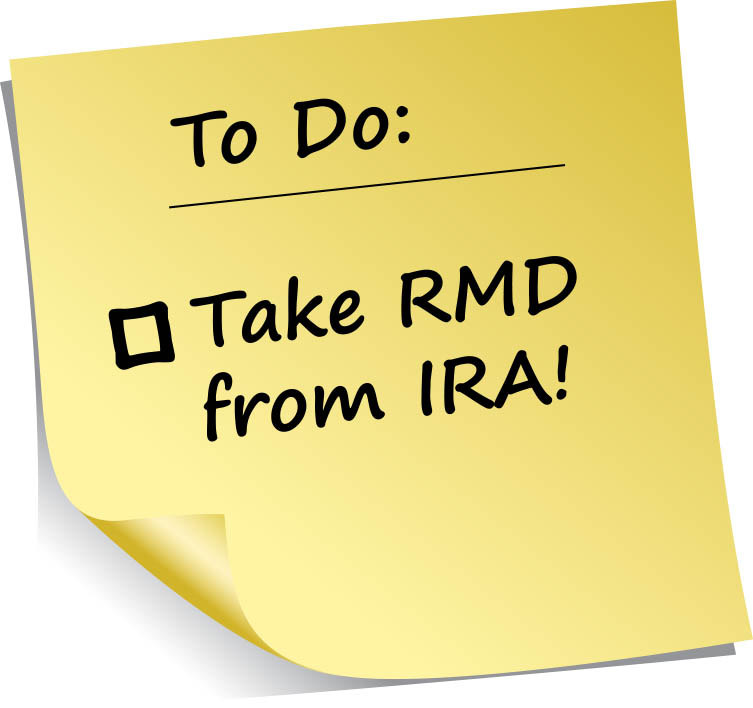RMD Rules Explained
November 17th, 2015 | 3 min. read

 The end of the year is not only the holiday season, it’s RMD season. It is the time of year to make sure you have taken your full RMDs by December 31.
The end of the year is not only the holiday season, it’s RMD season. It is the time of year to make sure you have taken your full RMDs by December 31.
Required Minimum Distributions (RMDs) are the amounts the federal government mandates you to withdraw annually from your retirement accounts after turning 73 years of age. Essentially, they prevent you from keeping retirement funds in your accounts indefinitely.
Failing to take your RMDs can result in a severe tax penalty. Here are the rules to help you fulfill your RMD obligations each year.
When RMDs start and when they are due
You must take your first RMD in the year in which you turn 73 years of age. You can, however, delay your first distribution until April 1 of the year following the year in which you turn 73. All subsequent distributions must be withdrawn each year by December 31.
That means delaying your first RMD until April 1 will result in taking two distributions in a single year, which may affect your taxable income.
What retirement accounts require RMDs
You generally must take an RMD from any retirement account in which you have made tax-deferred contributions or had tax-deferred earnings. If you have multiple retirement accounts, you must calculate RMDs for each one individually, although you can choose to take your full RMD amount from a single account or a combination of the accounts. These accounts include:
- Traditional IRAs
- SEP IRAs
- SIMPLE IRAs
- 401(k), 403(b) and 457 plans
- Pension and profit sharing plans
- Inherited beneficiary qualified accounts
Roth IRAs are an exception. You are not required to take RMDs from a Roth IRA during your lifetime. If you are still working, you are also not required to take RMDs from your active employer-provided retirement plan until April 1 of the year after you retire. Distributions, however, are still required from any non-active 401(k), 403(b), 457 or IRA.
How to calculate your RMD
Your RMD is calculated by dividing the prior December 31 balance of each retirement account by your life expectancy. For instance, your 2024 RMD is calculated using your December 31, 2023 balance.
Your life expectancy is estimated under the Internal Revenue Service life expectancy tables. As your life expectancy decreases, your RMDs eventually increase. For example, by the time you’re 90 years old, your RMD will be about 10% of your account value.
Generally, RMDs are configured to distribute the entire interest of the retirement account over the life expectancy of the owner, or the life expectancies of the owner and his or her beneficiary.
If your spouse is 10 years younger and the sole beneficiary of your account, then you qualify to use the joint life and last survivor expectancy table, which lowers your RMD amount as your joint life expectancy is greater.
Your account custodians may provide RMD calculations for each of your accounts. Typically, the figure is included in your respective monthly statements for each account. It is still your legal responsibility to take the correct RMD amount, so any calculations provided should be confirmed with your adviser.
Penalty for not taking RMDs
Failing to properly take your full RMD can result in a hefty fee. In the event you fail to withdraw your RMD on time or withdraw less than the full RMD amount, a 50% excise tax is applied to the amount that has not been withdrawn.
RMD rules for beneficiaries
Beneficiaries must take RMDs from inherited retirement accounts. However, there are different payout options available. Generally, beneficiaries must withdraw the entire balance within 5 years of the owner’s death, or take annual distributions over his or her lifetime beginning no later than one year after the owner’s death.
Different rules apply to different accounts, depending on when the account holder died as well as his or her relationship of the beneficiary. Therefore, beneficiaries should seek professional assistance.
RMD taxes
RMDs are included as ordinary income for taxes and are due when you file that year’s income-tax return. You cannot roll over your RMD into another tax-deferred account, including a Roth IRA.
What to do with your RMDs
If your financial adviser provides monthly withdrawals from your accounts, then the total of those distributions may be enough to cover your RMD. If not, your financial adviser can arrange the appropriate distribution. Either way, you should check with your financial adviser to ensure you have complied with the RMD rules.
In the case that you don’t need your RMD amount for living expenses, you have a variety of options for putting that money to use. You may reinvest it into a taxable account and potentially generate additional growth in your portfolio. Or, since it is the season and the funds have to be withdrawn anyways, you may want to use them to purchase gifts for your family.
Advance Capital Management is a fee-only RIA serving clients across the country. The Advance Capital Team includes financial advisers, investment managers, client service professionals and more -- all dedicated to helping people pursue their financial goals.
